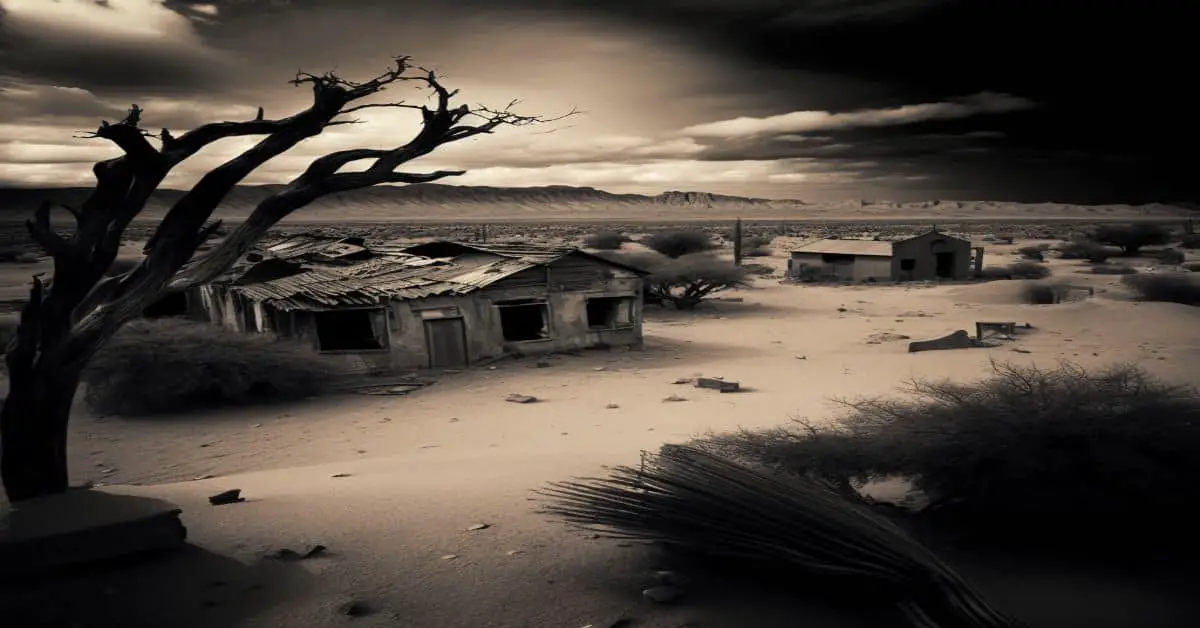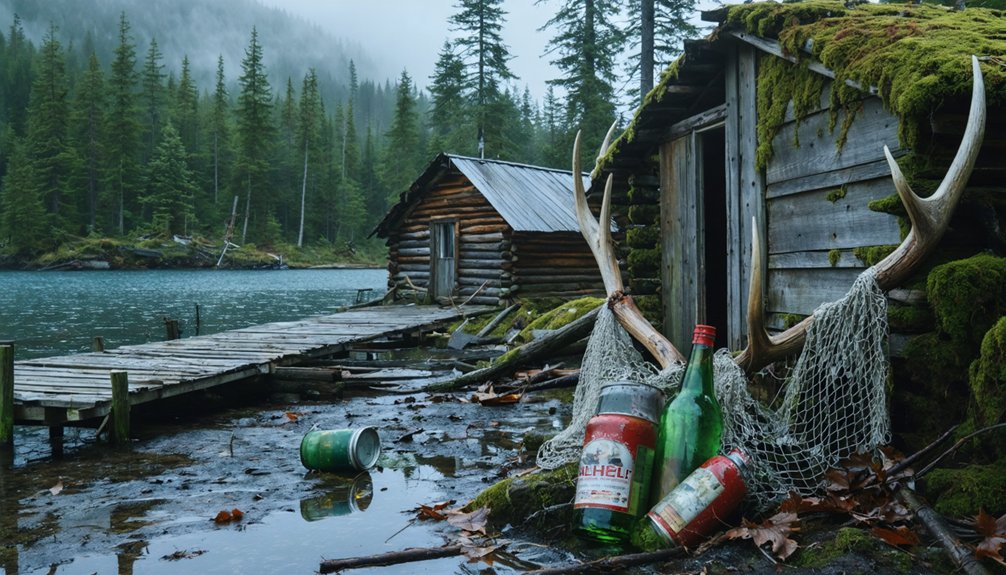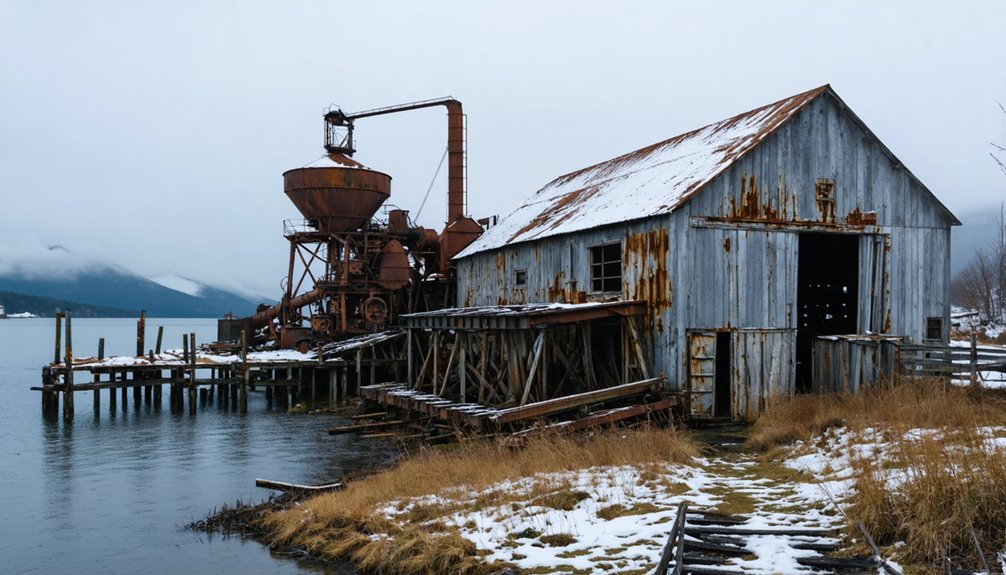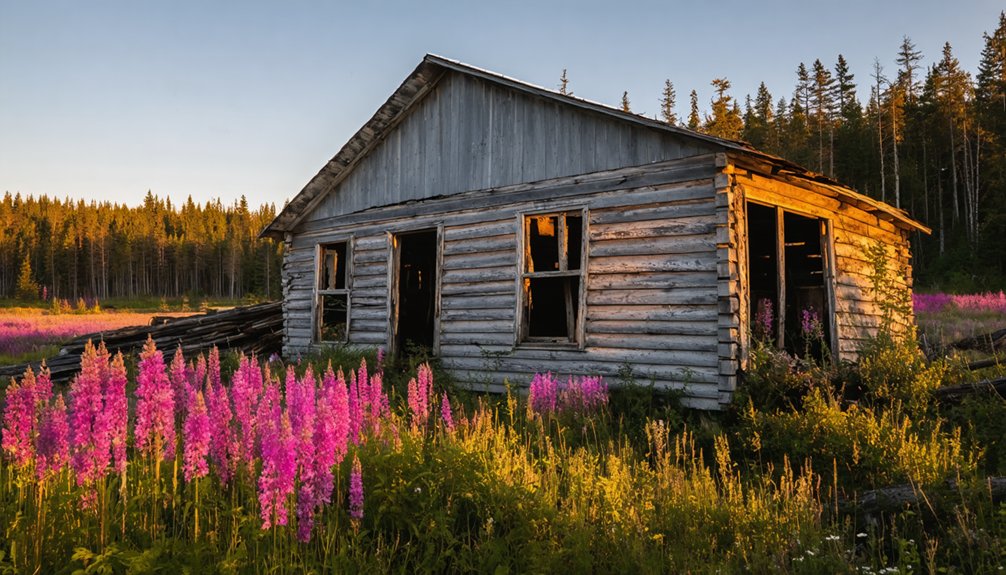Before the United States of America bought Alaska, it was a Russian colony that began in 1744. The U.S. purchased Alaska from Russia in 1867 for $7.2 million.
It is estimated there are around 100 abandoned settlements throughout Alaska. There are less than 50 documented ghost towns in Alaska, but the list is incomplete.
On January 3, 1959, Alaska became the 49th state. To offset Great Britain, which currently controlled present-day Canada, Russia offered Alaska to the United States in 1859, but it was not until later that the deal was finalized. Had the U.S. not purchased Alaska, the state would have either been independent after the Russian Civil War or requested to join Canada as territory lines became more permanent.
Alaska is the largest state in the United States. With a size large enough to fit Texas’s entire state twice, it is feasible to believe many ghost towns have not been adequately documented yet. Due to the area’s weather conditions, some areas may pose more challenges to explore and gather evidence, but that has not stopped the search.
Portlock, Alaska
Access to Portlock, Alaska, can only be achieved by boat or bush plane. In 1786 or 1787, Royal Navy Captain Nathanial Portlock landed in the area and established a settlement named after him. The small community remained successful throughout the 1800s as a fishing and mining community. In the early 1900s, the small town added canning to its list of successes after a cannery that specialized in salmon, among other foods, was built.
A U.S. post office was opened in 1921. The town also had a Territorial Boarding School for children of small fishing camps. In the 1940s, strange, unexplainable events started to happen—several men from the town who had gone out hunting in the surrounding hills mysteriously disappeared.
Fear spread throughout the residents as dismembered bodies began to wash ashore in the town’s lagoon. The bodies that were located or had washed ashore did not suffer from any injuries relatable to bear attacks.
Tales of large footprints in the mud, larger than normal man-like beings, and evil spirits in the hills sparked a mass movement out of the town. By 1949, the town had been abandoned with the official closing of the post office in 1950.
All left of Portlock is mine tunnels, rusted cannery equipment, and building footers. Previous residents and descendants of Portlock families have claimed the location to be haunted.
Kennecott, Alaska
Kennecott, Alaska, also known as Kennicott, was a copper mining town in the early 1900s. In the summer of 1900, two prospectors spotted a green patch in an odd place for grass to be growing. Upon review, the two men discovered malachite and chalcocite, also known as copper ore.
A few days later, a U.S. Geological Survey geologist found chalcocite at the same location, and in 1901, a mining engineer spent months mapping and sampling the area. The Bonanza claim, and eventually mine, were the world’s richest known concentration of copper.
Over the few short years from the initial discovery until the mining operation was officially started, quite a few legal challenges and company acquisitions took place. Jack Smith and Clarence Warner, who found the copper ore in 1900, were associated with the McClellan party. Stephen Birch, the mining engineer, was looking for a mineral investment opportunity and had the financial backing of the Havemeyer family and another investor, James Ralph.
Birch spent most of 1901-1902 acquiring the McClellan group’s interests for the Alaska Copper Company of Birch, Havemeyer, Ralph, and Schulz. The company was later renamed Alaska Copper and Coal Company. Political arguments over the intended mine were fought between conservationists and those with financial interests in the copper.
Eventually, in 1909, the mine was approved and allowed to begin operations. The mine was named after Kennicott Glacier, discovered by Robert Kennicott in 1899, and visible in the valley below. When Birch completed the necessary paperwork for the mine, a clerical error switched an “e” for an “i,” and the name Kennecott was created. Five mines were part of Kennecott: Bonanza, Jumbo, Mother Lode, Erie, and Glacier.
Glacier was an open-pit mine that was operational during the summer months and served as an extension to Bonanza. The other four mines were located across Bonanza Ridge and connected by tunnels. Using a tram system, ore was hoisted to Kennecott, then hauled in 140-pound sacks on steel flat cars to Cordova using the Copper River and Northwestern Railway.
The first shipment of ore by train occurred in 1911. Shipments by the steamship Chittyna followed next. Kennecott’s peak year was 1916 when the mines produced copper ore valued at $32.4 million. By 1925, a geologist familiar with Kennecott predicted the company’s end of mining operations was near. The predictions ended up being right, and in 1929 the first of the five mines, Glacier, was closed.
Towards the end of July 1938, Mother Lode was the next to close. Two months later, in September of 1938, Jumbo, Erie, and Bonanza closed. The final train to leave, marking the official end of Kennecott, was November 10, 1938. The prosperous mining town of Kennecott had been abandoned.
During the twenty-nine years Kennecott was operational, the mines produced over 4.6 million tons of ore that contained 1.183 billion pounds of copper. The gross revenue was reported above $200 million with a net profit of over $100 million. The Kennecott hospital was the first in Alaska to have an X-ray machine.
In 1938, after Kennecott had stopped operations, it was proposed the mining town be preserved as a National Park, but the proposal did not get any support to move forward. From 1939 to the mid-1950s, Kennecott remained mostly abandoned.
Only a single family stayed to serve as watchmen over the property. In the 1960s, a company with land rights ordered the town to be demolished to avoid liabilities. The town’s demolition was never completed, and only a few buildings were destroyed. The fourteen-story mill still stands today, along with other essential structures in this present-day ghost town.
Dyea, Alaska
Dyea, Alaska, held a significant role in the Klondike Gold Rush of 1896-1899. During the gold rush, prospectors would land at Dyea, leave the boats that brought them in, begin their trek on the Chilkoot Trail over the Coast Mountains, and continue for another 500 miles to reach the goldfields near Dawson City.
Of the estimated 100,000 prospectors that joined the Klondike Gold Rush, only 30,000 completed the trip. The other 70,000 either died, stopped where they were along the trail, or turned back and looked for other mines to work.
The trip was not only long but dangerous and cold. To get an idea of what the trail looked like, the movie based on Jack London’s book White Fang, while a fictional story, used the Klondike Gold Rush as a background for the story.
The number of prospectors traveling through Dyea made the town an economic success story. Thousands of prospectors and entrepreneurs would pass through the town routinely, and 8,000 called it home. Two events started the downfall of the town.
The first turning point away from success was Skagway, a nearby town, which was discovered to have deep water ports compared to the shallow ones in Dyea. Boats continued past Dyea and chose to land in Skagway.
An unfortunate second event happened on April 3, 1898, when an avalanche overtook Chilkoot Pass Trail, killing dozens of people. Skagway took advantage of the tragedy and used the natural disaster to push a railroad route along White Pass Trail.
When the new railway was completed, Dyea was bypassed. As fewer prospectors would travel through the town, it was eventually abandoned. When the Klondike Gold Rush National Historical Park was established, it included the former town of Dyea along with its cemeteries, building foundations, and what is left of the wharf.
Ukivok, Alaska
Ukivok is a small cliffside village located on King Island. The small island is surrounded by steep cliffs on all sides, posing the question of who and why anyone would want to try establishing a village in this harsh location. During the summer, a local population made up of Inupiats known as Aseuluk, or People of the Sea, would use the mainland for fishing and whaling, but thick ice would form during the winter months. The ice-created conditions were crabs, seals, and other cold-season games would be more prominent in the area.
Creating the stilt village of Ukivok on the cliffside offered a seasonal location to hunt the winter game. There was a school placed on stilts to allow a place for children to continue learning while staying on the island, but in the mid-1900s, the Bureau of Indian Affairs decided to close the school and require children to remain year-round on the mainland.
The decision to keep the younger Aseuluk generation on the mainland challenged the older generation who spent time in Ukivok. The winter food supply suffered without their younger family members’ help, and the island village was abandoned. The stilt village of Ukivok remains on the side of a cliff, waiting for its residents to return.



